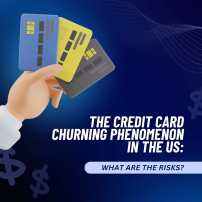The Future of Cryptocurrencies and the Role of Stablecoins

Advertisements
As the digital asset market matures, stablecoins are expected to play an increasingly vital role in the ecosystem.
Here’s how they are shaping the future:
Facilitating Everyday Transactions
The inherent stability of stablecoins makes them ideal for daily transactions.
Unlike volatile assets, stablecoins can be used as a reliable medium of exchange for purchasing goods and services without the risk of sudden value swings.
This stability encourages broader acceptance among merchants and consumers, bridging the gap between traditional finance and the crypto economy.
Enhancing Decentralized Finance (DeFi)
Stablecoins are integral to the burgeoning DeFi sector.
They serve as a stable base currency for lending, borrowing, and yield farming, providing liquidity and enabling a wide range of financial services without the need for traditional banks.
The stability offered by these assets helps mitigate risks within DeFi protocols, fostering greater trust and participation from users.
Enabling Cross-Border Payments
One of the most transformative aspects of cryptocurrencies is their ability to facilitate fast, low-cost, cross-border transactions.
Stablecoins enhance this capability by eliminating the currency exchange risks associated with international payments.
Businesses and individuals can use stablecoins to send and receive payments globally, with the confidence that the value will remain consistent.
Bridging Traditional Finance and the Crypto World
Stablecoins are increasingly being integrated into traditional financial systems.
Banks, payment processors, and financial institutions are exploring the use of stablecoins for settlement, remittances, and even as part of central bank initiatives such as Central Bank Digital Currencies (CBDCs).
By serving as a bridge between conventional fiat systems and digital assets, stablecoins have the potential to transform the financial landscape.
Providing a Safe Haven During Market Turbulence
In times of high crypto market volatility, stablecoins can act as a safe haven for investors.
They allow traders and investors to quickly convert volatile assets into a stable form without exiting the crypto ecosystem entirely.
This ability to “park” funds in stablecoins helps preserve capital during market downturns and facilitates smoother transitions back into more volatile assets when conditions improve.
Challenges Facing Stablecoins and the Broader Crypto Ecosystem
Despite their promising role, stablecoins and cryptocurrencies face several challenges that could shape their future development:
Regulatory Uncertainty
One of the most significant hurdles is regulatory uncertainty. Governments and financial regulators worldwide are still determining how to classify and manage stablecoins.
Issues such as anti-money laundering (AML), know your customer (KYC) requirements, and financial stability concerns are at the forefront of regulatory discussions.
Clear and consistent regulations are essential for the widespread adoption of stablecoins.
Transparency and Trust
For stablecoins to gain the trust of users, issuers must provide full transparency regarding the reserves backing these tokens.
Incidents in the past where reserve audits were lacking or misleading have raised concerns among investors.
Robust, regular audits and transparent reporting are crucial for building and maintaining confidence in these digital assets.
Technological Risks
While blockchain technology offers many benefits, it is not without its risks.
Smart contract vulnerabilities, hacking incidents, and technical failures can all threaten the stability and security of stablecoins.
Continuous improvements in cybersecurity and blockchain technology are necessary to address these challenges.
Market Competition
The crypto space is highly competitive, with numerous stablecoin projects vying for dominance.
Market dynamics, user adoption, and the ability to scale will determine which stablecoins emerge as leaders.
Competition can drive innovation, but it can also lead to fragmentation and interoperability issues across different platforms.
The Interplay Between Stablecoins and Central Bank Digital Currencies (CBDCs)
A closely related development in the digital asset space is the emergence of Central Bank Digital Currencies (CBDCs).
While stablecoins are typically issued by private entities, CBDCs are digital representations of a country’s fiat currency issued by its central bank.
Both share the goal of offering a digital, stable medium of exchange, but there are notable differences:
- Regulatory Oversight: CBDCs are subject to direct government regulation and oversight, which could lead to greater stability and trust among users.
- Monetary Policy Integration: CBDCs can be integrated into national monetary policies, potentially offering tools for more effective economic management.
- Interoperability: The coexistence of stablecoins and CBDCs raises questions about interoperability. Ideally, these digital assets will complement each other, with stablecoins serving niche markets and CBDCs providing a foundation for national digital economies.
The evolution of CBDCs could have a profound impact on the role of stablecoins, either by encouraging convergence between the two or by creating new competitive dynamics within the digital currency space.
The Road Ahead: Innovation and Adoption
The future of cryptocurrencies and stablecoins is intertwined with broader technological and economic trends.
As blockchain technology matures and regulatory frameworks become clearer, we can expect several key developments:
- Increased Adoption: As more businesses, financial institutions, and consumers recognize the benefits of digital assets, the adoption of cryptocurrencies and stablecoins is likely to accelerate.
- Enhanced Integration: With growing integration into traditional financial systems, stablecoins could become a standard tool for transactions, lending, and cross-border payments.
- Continuous Innovation: The dynamic nature of the crypto space ensures that innovation will continue. New technologies, such as enhanced smart contracts, improved security protocols, and advanced data analytics, will drive further evolution in investment management and everyday transactions.
- User-Centric Developments: As digital wallets and mobile applications become more user-friendly, even individuals with limited technical knowledge will be able to participate in the crypto ecosystem with ease. This democratization of finance has the potential to transform how we manage money globally.
Final Thoughts: Embracing a Digital Future
The future of cryptocurrencies is bright and filled with potential, yet it is not without its challenges.
The role of stablecoins is pivotal in this evolution, providing the stability needed to bridge the gap between highly volatile digital assets and the demands of everyday commerce.
As regulatory landscapes evolve and technological innovations continue to emerge, stablecoins may well become the backbone of a new digital financial system—one that is accessible, efficient, and secure.
For investors, businesses, and policymakers alike, understanding the interplay between cryptocurrencies and stablecoins is essential for navigating this rapidly changing landscape.
By staying informed, adopting best practices, and embracing innovation, stakeholders can harness the power of digital assets to drive economic growth and transform the global financial system.
In conclusion, while the journey toward a fully digital and stable financial future is still unfolding, the advancements in cryptocurrencies and the critical role of stablecoins offer a promising path forward.
As we look to the horizon, the integration of these technologies promises not only to redefine investment management and financial transactions but also to empower individuals worldwide with unprecedented financial freedom.
Related content

Best High-Yield Savings Accounts in the US in 2025

Best Credit Cards with No Foreign Transaction Fees: Ideal for Frequent Travelers

The Credit Card Churning Phenomenon in the US: Is It Legal? Is It Worth It? What Are the Risks?

The Complete Beginner’s Guide: How to Use Your First Credit Card in the US Responsibly

0% APR Credit Cards: How to Take Advantage and What Traps to Avoid
